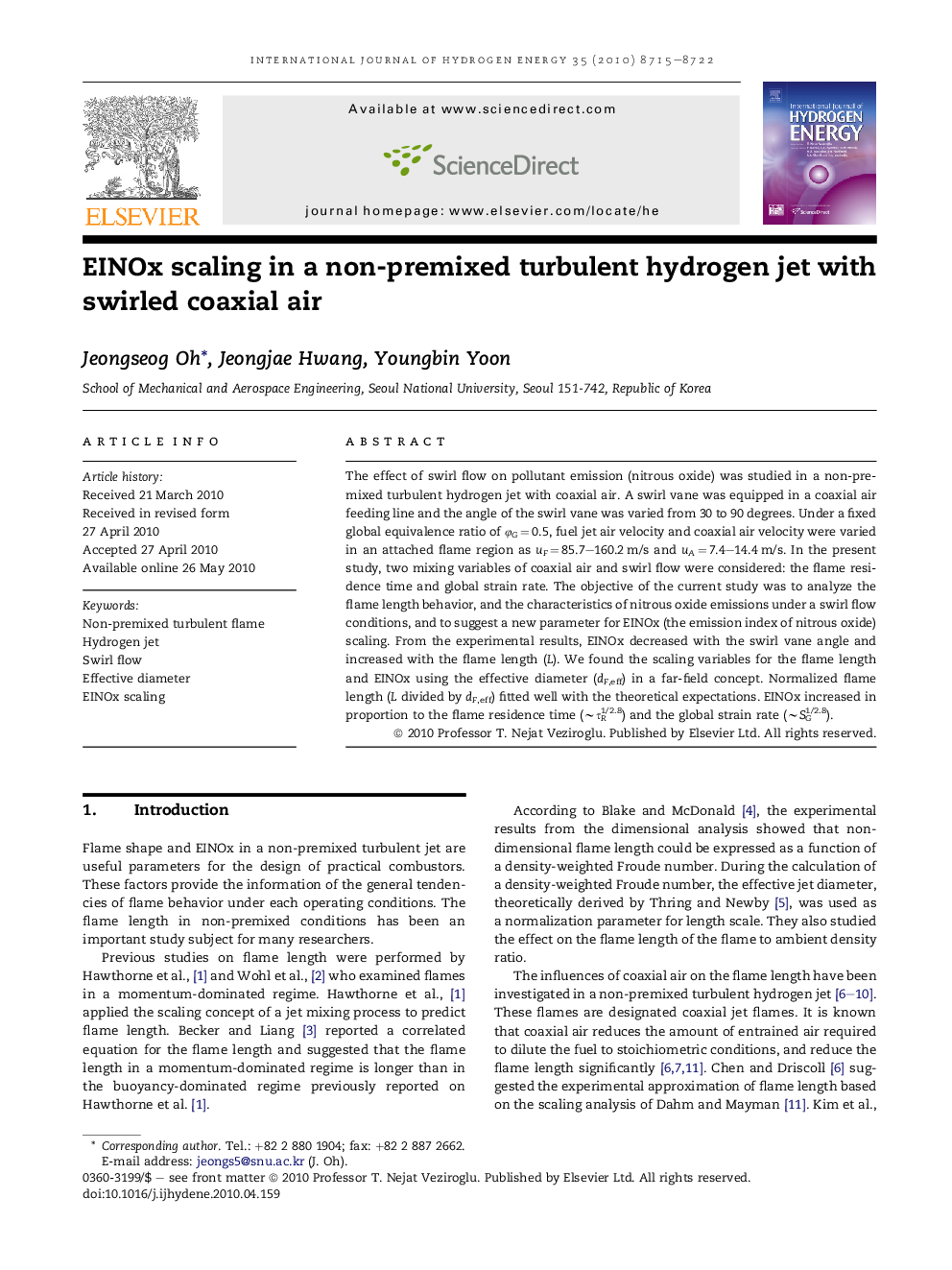| Article ID | Journal | Published Year | Pages | File Type |
|---|---|---|---|---|
| 1280453 | International Journal of Hydrogen Energy | 2010 | 8 Pages |
The effect of swirl flow on pollutant emission (nitrous oxide) was studied in a non-premixed turbulent hydrogen jet with coaxial air. A swirl vane was equipped in a coaxial air feeding line and the angle of the swirl vane was varied from 30 to 90 degrees. Under a fixed global equivalence ratio of φG = 0.5, fuel jet air velocity and coaxial air velocity were varied in an attached flame region as uF = 85.7–160.2 m/s and uA = 7.4–14.4 m/s. In the present study, two mixing variables of coaxial air and swirl flow were considered: the flame residence time and global strain rate. The objective of the current study was to analyze the flame length behavior, and the characteristics of nitrous oxide emissions under a swirl flow conditions, and to suggest a new parameter for EINOx (the emission index of nitrous oxide) scaling. From the experimental results, EINOx decreased with the swirl vane angle and increased with the flame length (L). We found the scaling variables for the flame length and EINOx using the effective diameter (dF,eff) in a far-field concept. Normalized flame length (L divided by dF,eff) fitted well with the theoretical expectations. EINOx increased in proportion to the flame residence time (∼τR1/2.8) and the global strain rate (∼SG1/2.8).
